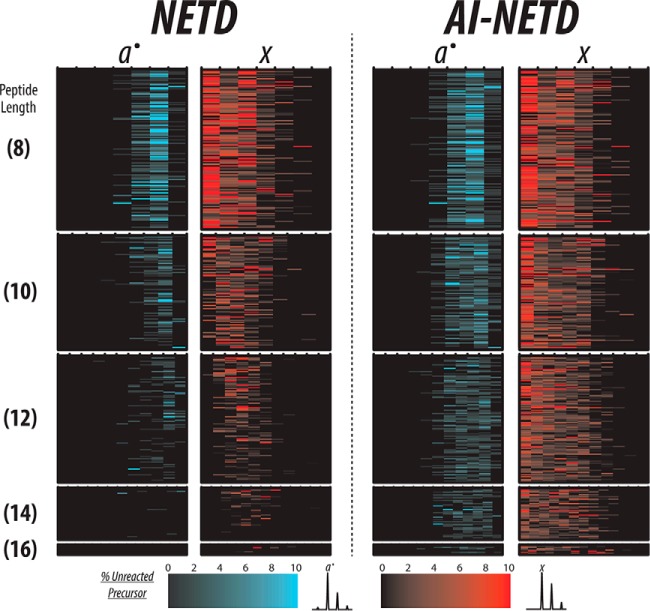Fig. 3.
A fragment map of peptides identified with both NETD and AI-NETD. Here, each row is a unique peptide so that the same row across all four columns represents the same peptide sequence. Each subcolumn corresponds a peptide backbone bond so that a peptide with eight residues has seven backbone bonds and thus seven subcolumns for both a●- and x-type product ions. The numbers in parenthesis to the left show peptide length in number of residues, and all peptides shown here are z = −2, meaning precursor charge density decreases from top to bottom. With NETD, a●- and x-type fragments decrease in number and intensity as precursor charge density decreases (i.e. as peptide length increases). AI-NETD maintains superior fragment ion generation even with decreasing precursor charge density, greatly increasing peptide dissociation and sequence coverage compared with NETD.

